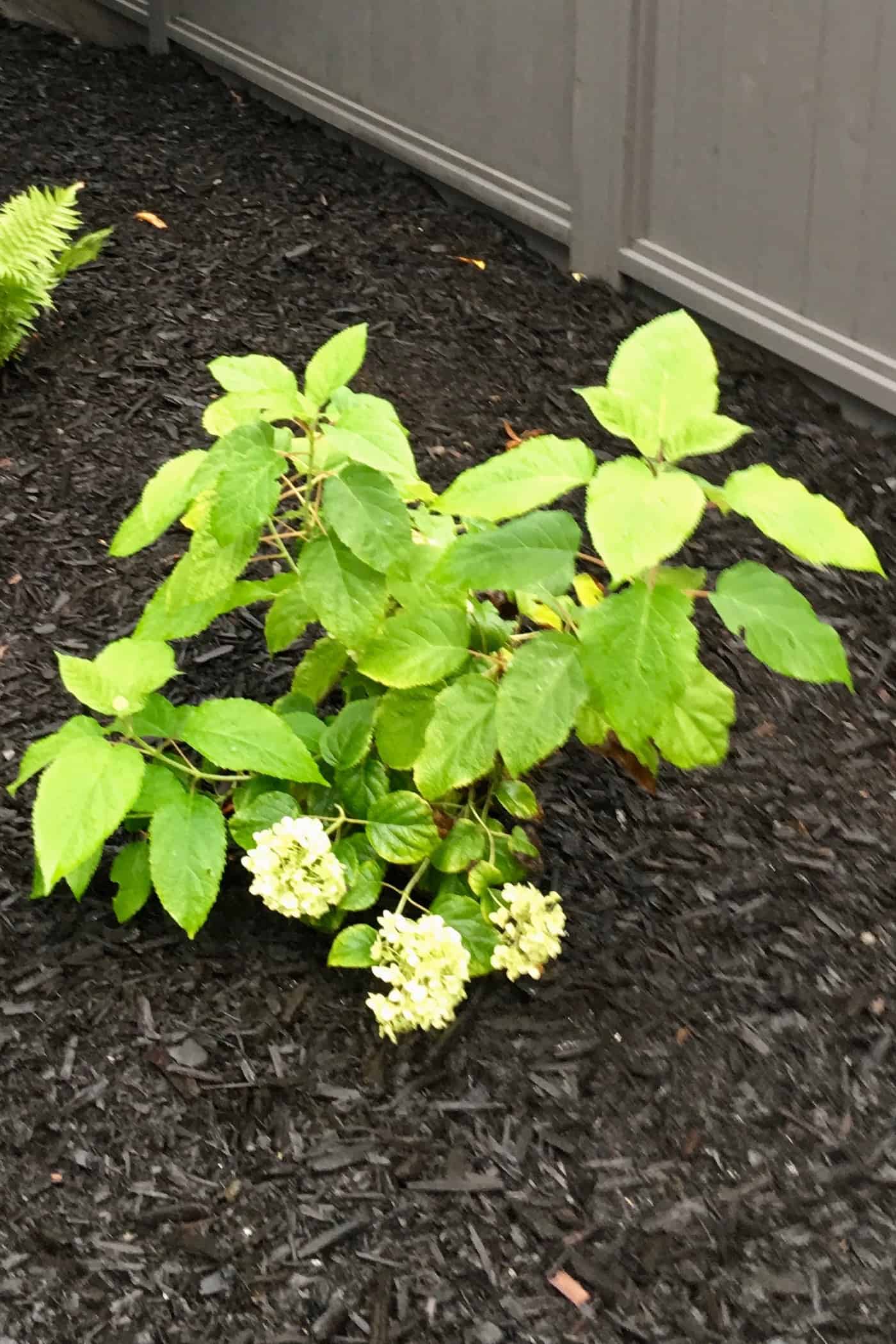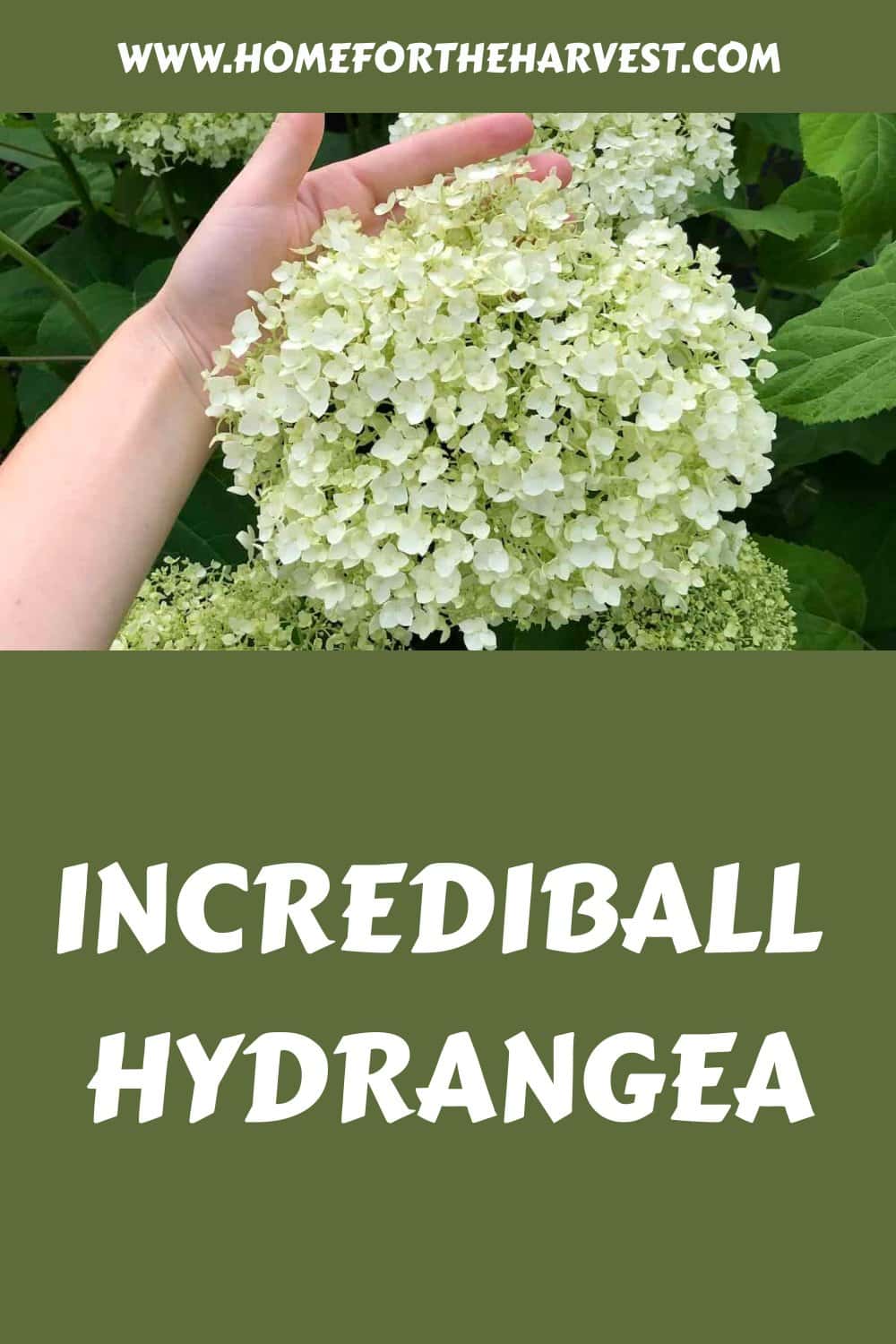Incrediball hydrangea is an attractive, fast-growing, low-maintenance cultivar of native smooth hydrangea. This cold-hardy deciduous shrub has enormous white flowers that grow on strong stems. Incrediball has a long blooming season, attractive green foliage in the garden, and flowers that can be displayed in bouquets or dried for fall decor.
Incrediball hydrangea is an improved version of the classic Annabelle hydrangea. Incrediball is offered by international plant brand Proven Winners, who consistently name Incrediball as one of their best-selling plants.
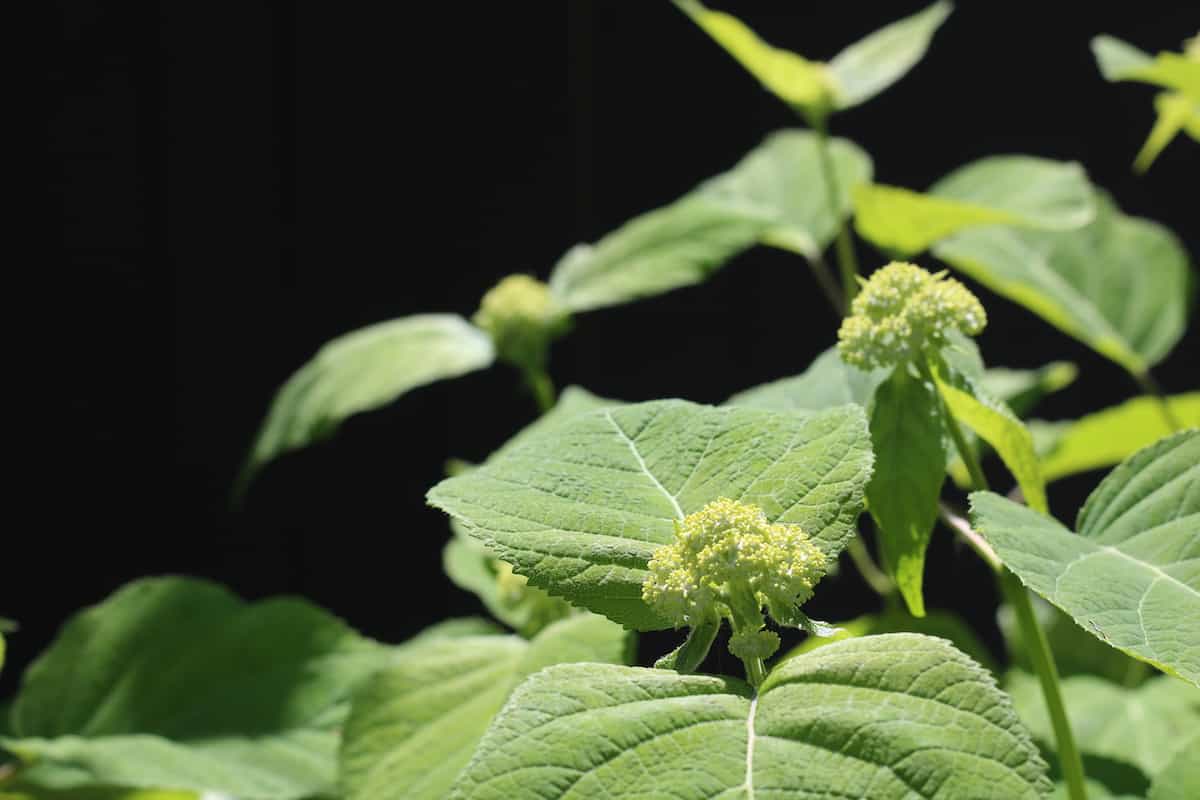
Incrediball hydrangea basics
What’s the perfect white hydrangea plant for northern gardens? Incrediball Hydrangea is as gorgeous as it is easy to care for and can be grown in Zone 3-9.
Incrediball Hydrangea is a cultivar of Hydrangea arborescens (Smooth Hydrangea). Native to North America, these shrubs can produce flowers up to a foot across once they’ve made themselves at home in your garden. The blooms open a pale green color, fading to white as the summer draws to an end.
The Incrediball Hydrangea was bred from the popular Annabelle Hydrangea and is referred to as an “improved” version due to its stronger stems. Incrediball is sometimes called “Strong Annabelle” hydrangea.
“The flowers are magnificent, huge, dramatic globes of white, which start off large and increase in size as the plant matures. The flowers are not affected by soil pH and the green-washed buds open white, aging to jade at the end of the season.”
Hydrangeas: Beautiful Varieties for Home and Garden Hardcover, by Naomi Slade
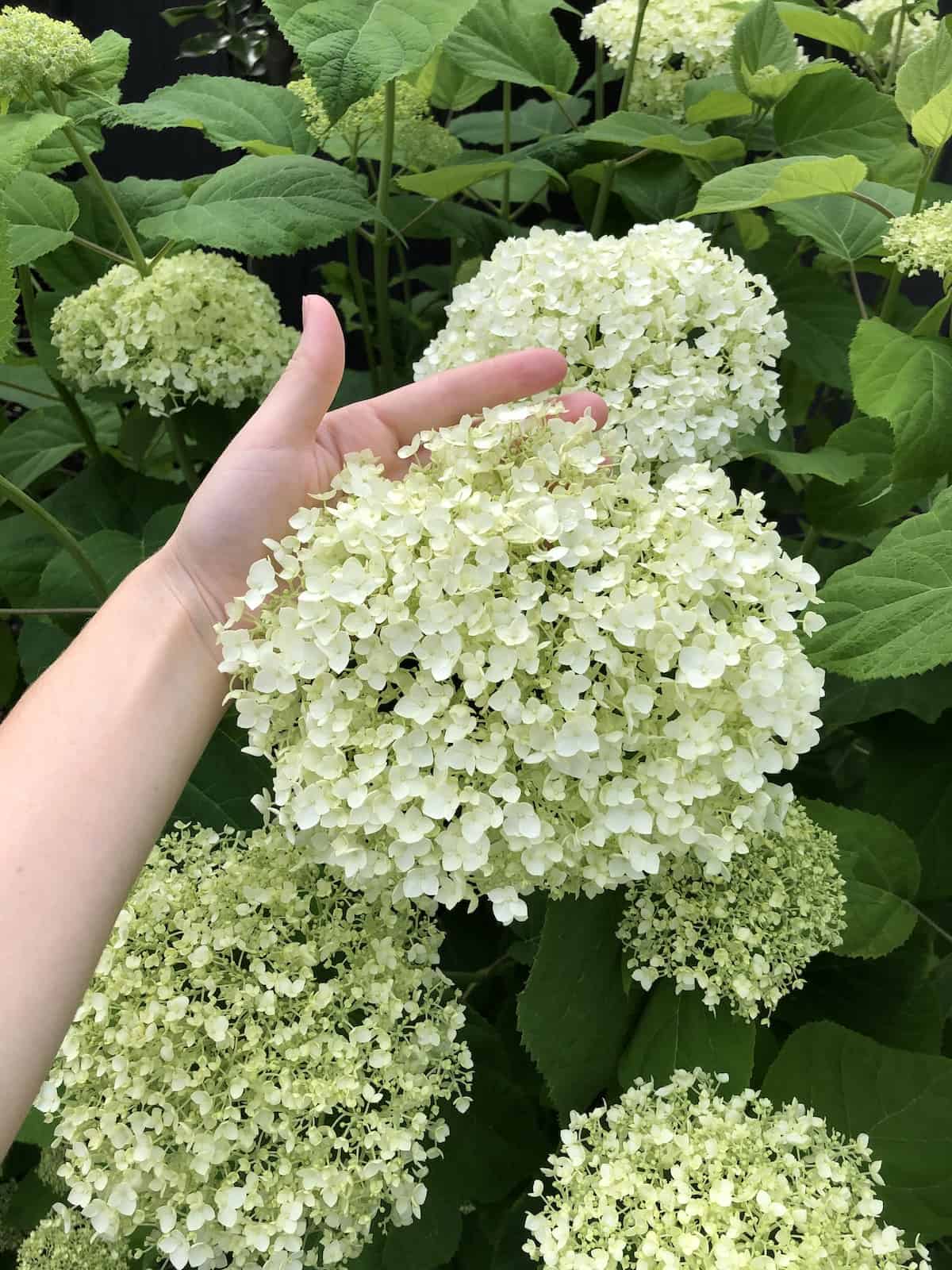
Growing Incrediball hydrangea shrubs in the garden
Incrediball hydrangeas are among the most low-maintenance and cold-hardy hydrangea varieties with white mophead-type flowers. Incrediball can be grown in Zones 3-9. These hardy shrubs can survive temperatures well below freezing, overwintering in temperatures down to -30°F ( -34.4°C)!
In terms of maintenance, all Incrediball Hydrangea plants require is early spring pruning followed by frequent watering throughout the growing season. They can of course be fed with organic fertilizer and otherwise fussed over, but they are among the easiest hydrangeas to grow. And for minimal effort, you get mophead-type blooms without having to protect the shrub from the winter cold.
The Incrediball Hydrangea shrub has dark green foliage and large creamy-white rounded blooms. The flowers are a light green as they first open (similar to LimeLight and Little Lime). The flowers then turn white for several weeks before they start to fade in the fall. Flowers turn brown after a hard freeze or frost. Smooth hydrangeas like Incrediball do not change the color of their flowers with different soil pH adjustments.
Hydrangea flowers for cold climates
Another feature of the Incrediball hydrangea is that it flowers on new wood. Some hydrangeas flower on old wood while others bloom on wood grown earlier in the same year. Hydrangeas that flower on old wood actually grow their flower buds at the end of the summer and these buds stay on the plant during wintertime in preparation for next year.
In some climates, however, the cold weather can do away with an entire hydrangea stem during wintertime…resulting in no flowers the next summer! It’s such a shame when that happens. Because Incrediball flowers on new wood, buds grow in the same year that they bloom. This makes smooth hydrangeas like Incrediball much more reliable to flower than bigleaf hydrangea (Hydrangea macrophylla) in colder zones.
“Incrediball accepts sun or partial shade, but the hotter and dryer the climate, the more shade it needs. It is also hardier than macrophylla types and it is claimed that in a suitable microclimate, it will survive even in USDA Zone 3 — which drops to well below -30°F.”
Hydrangeas: Beautiful Varieties for Home and Garden Hardcover, by Naomi Slade
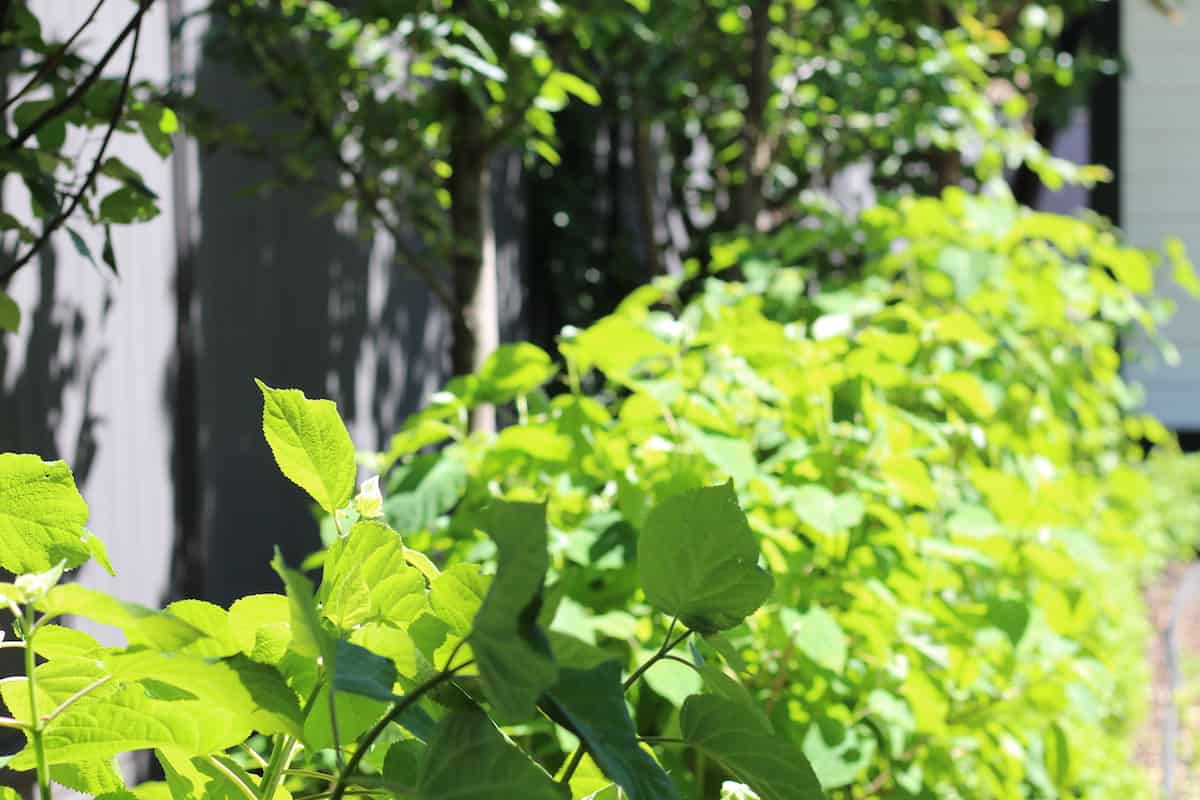
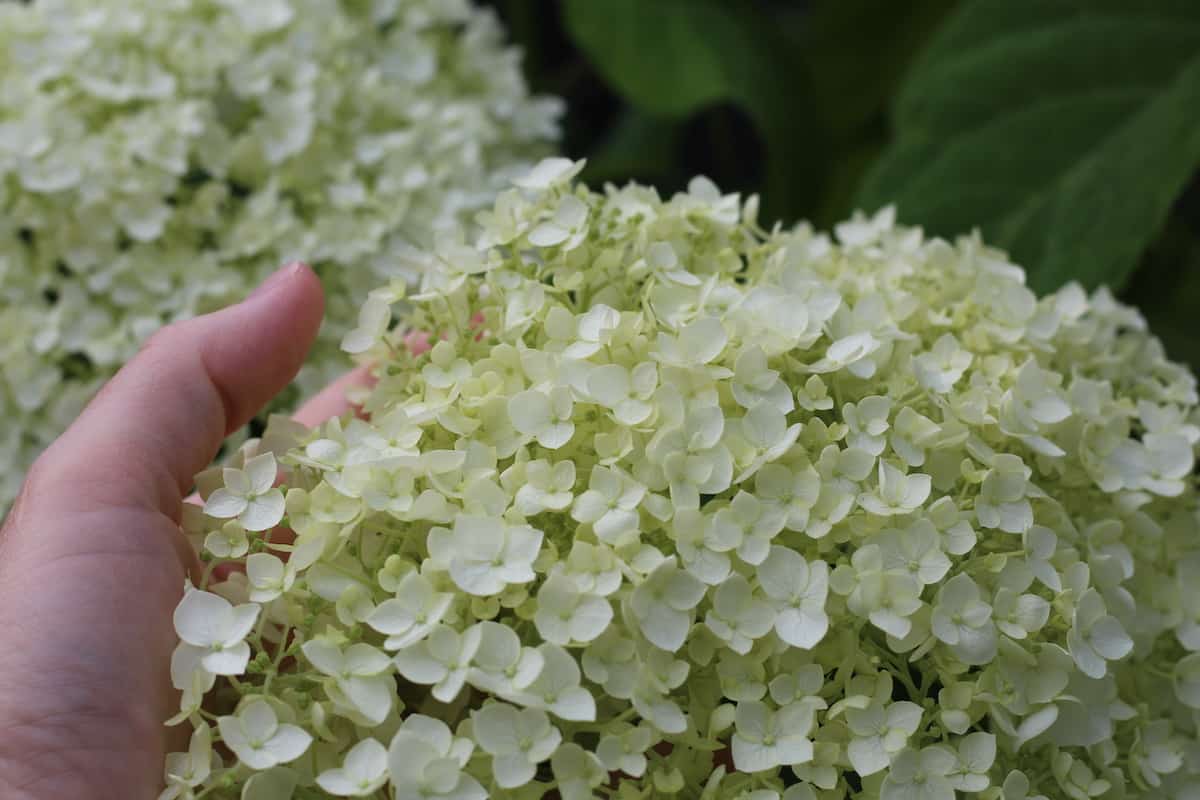
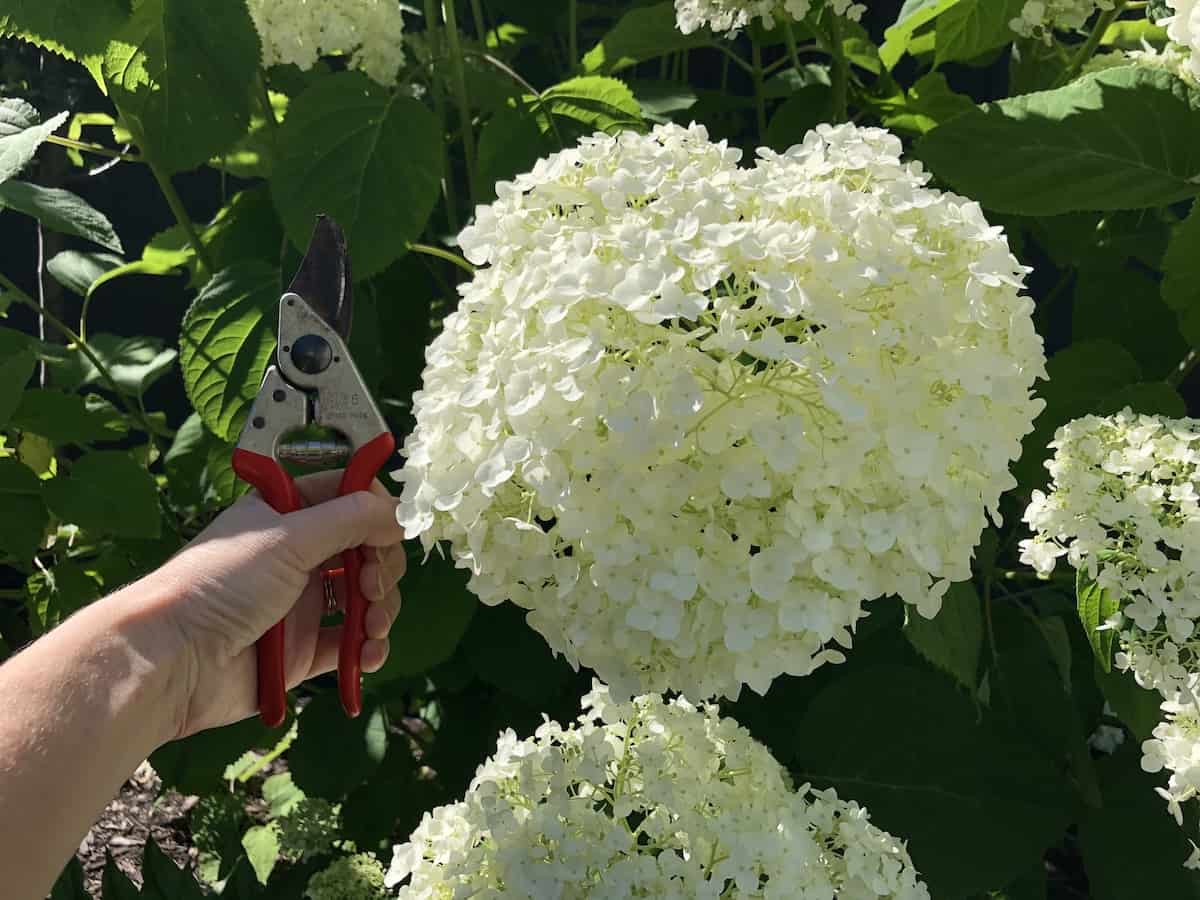
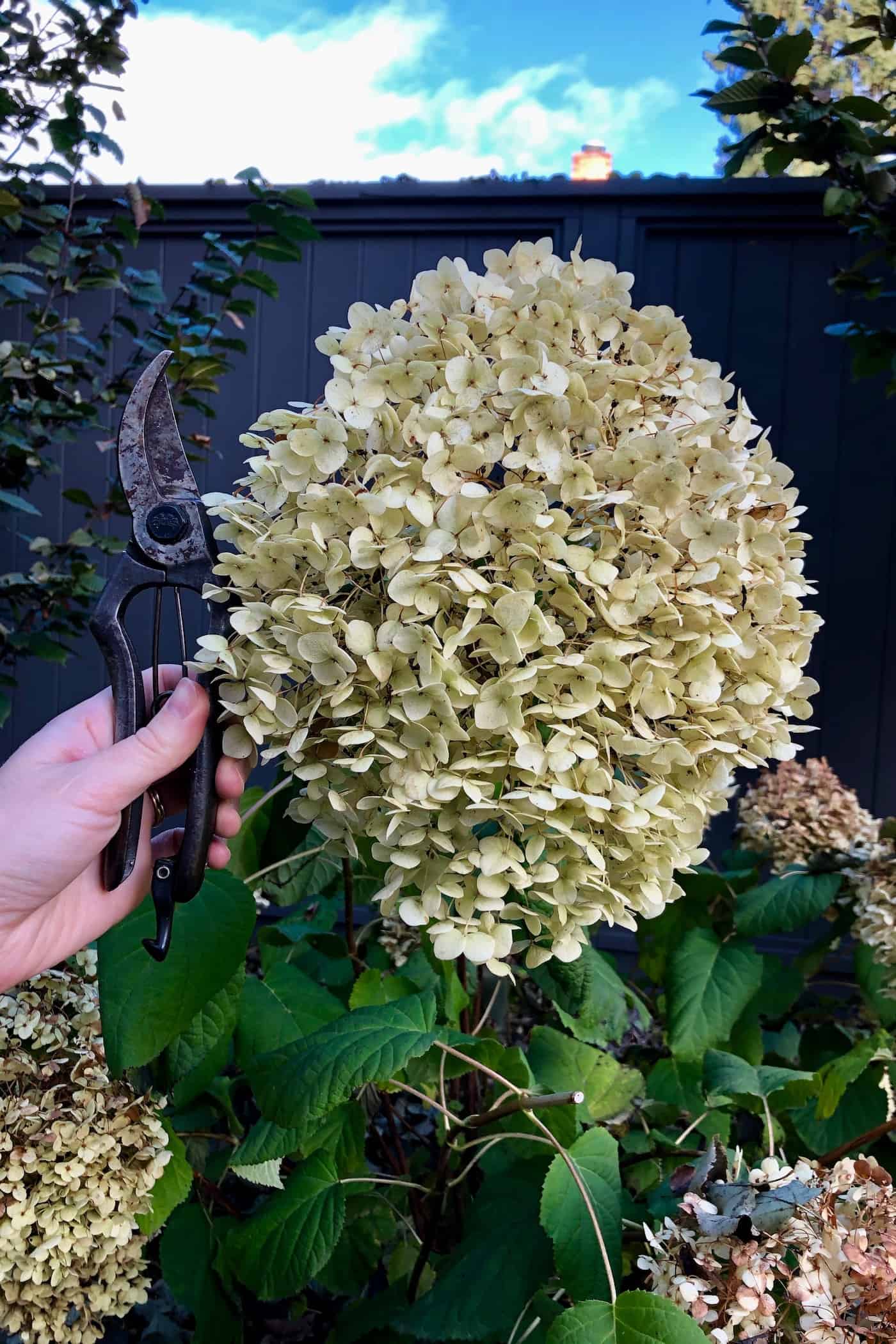
Incrediball hydrangea care & maintenance tips
The Incrediball Hydrangea is quite easy to care for. This shrub thrives in sunlight and moist soil. It’s happy in both full sun and part sun but will struggle in the shade (less than 4 hours of sunlight per day) unless grown in a very hot and dry climate.
Like its mother variety Annabelle, the Incrediball Hydrangea does best in soil that is consistently moist but not totally saturated. The roots need air too! These shrubs do best with consistent irrigation. A thick layer of mulch on the soil surrounding the plant will also reduce watering maintenance requirements. Read on for detailed plant care information for Incrediball Hydrangea plants.
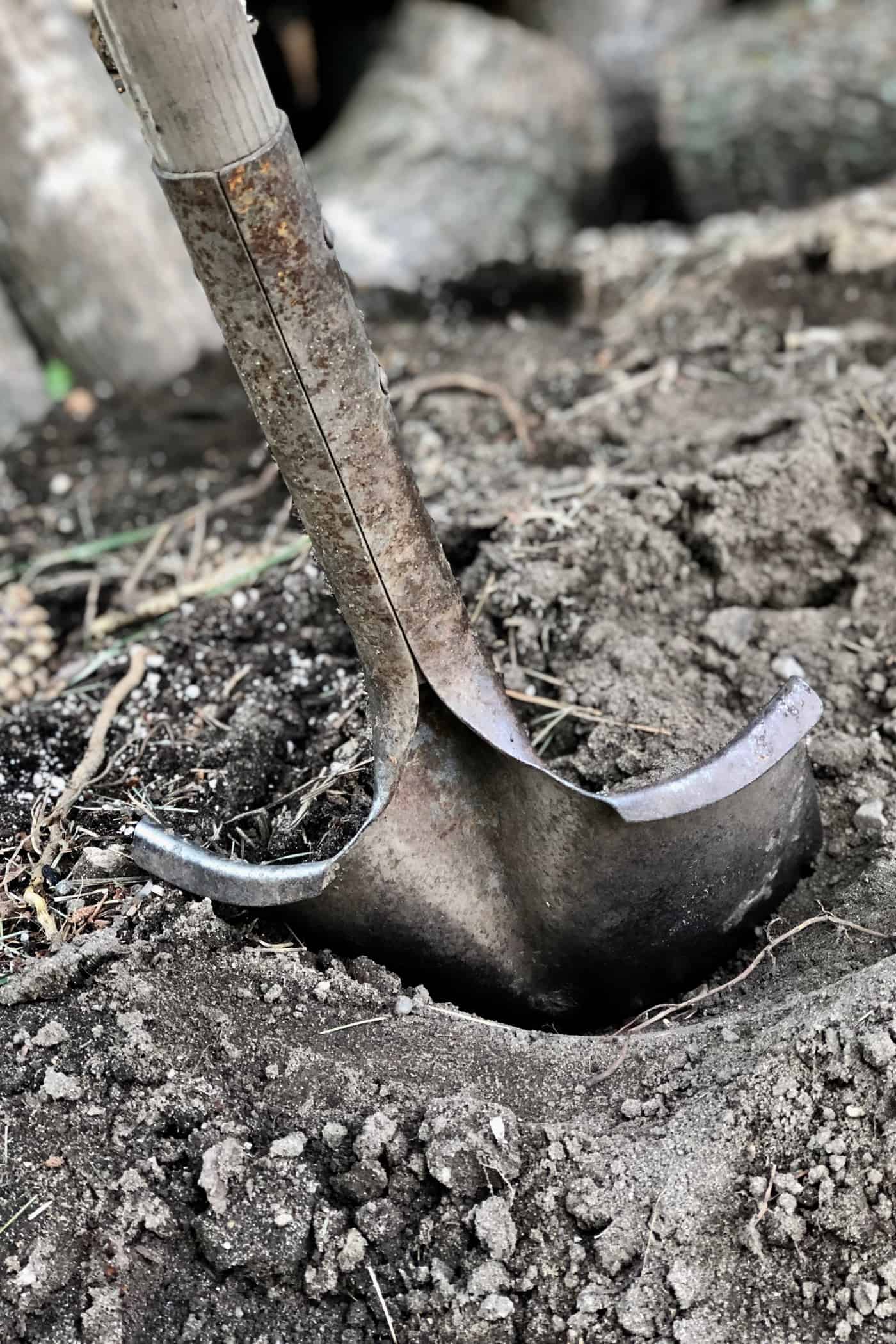
Incrediball hydrangea planting guide
Planting Incrediball Hydrangeas is best done in early spring or early fall. I’ve had the best transplanting experiences with early fall planting, but the availability of these popular plants is generally better in the early spring (before all the nurseries sell out of them!). It’s nice to find the shrubs as they’re just thinking about waking up from winter dormancy.
These shrubs are fairly hardy, and even midsummer planting is possible if the soil is kept consistently moist. I had one midsummer-planted Incrediball Shrub experience transplant shock and fail to flower that summer or the next summer. But it did live… its growth has just fallen behind the others.
“Fall is actually the very best time for planting—especially trees and shrubs. The reason is that the roots never go dormant. While the upper part of the plant is asleep, the roots are busy getting established, which kind of gives them a jumpstart on spring. So when the buds are ready to open and the leaves flush out, you’ve got a good root system established.”
Dr. Linda Chalker-Scott, Interview with Margaret Roach, A Way to Garden
Speaking of growth, consider the size of the full-grown shrub when planting Incrediball Hydrangea bushes. In good condition, Incrediball reaches a fully mature size of 5 feet high by 5 feet wide. New shrubs have a moderate growth rate. It’s not particularly slow-growing or fast-growing in most conditions.
I’ve seen my own Incrediball Hydrangeas grow quite quickly with a steady stream of drip line water and a nice blanket of mulch to stabilize soil moisture. The growth rate also seems to be quite affected by sunlight. Shrubs in the shade certainly don’t grow as fast (or flower as much) as shrubs that receive at least 6 hours of sun per day. Plant them somewhere where they get at least 6 hours of sunlight a day but also where the soil can be kept consistently moist.
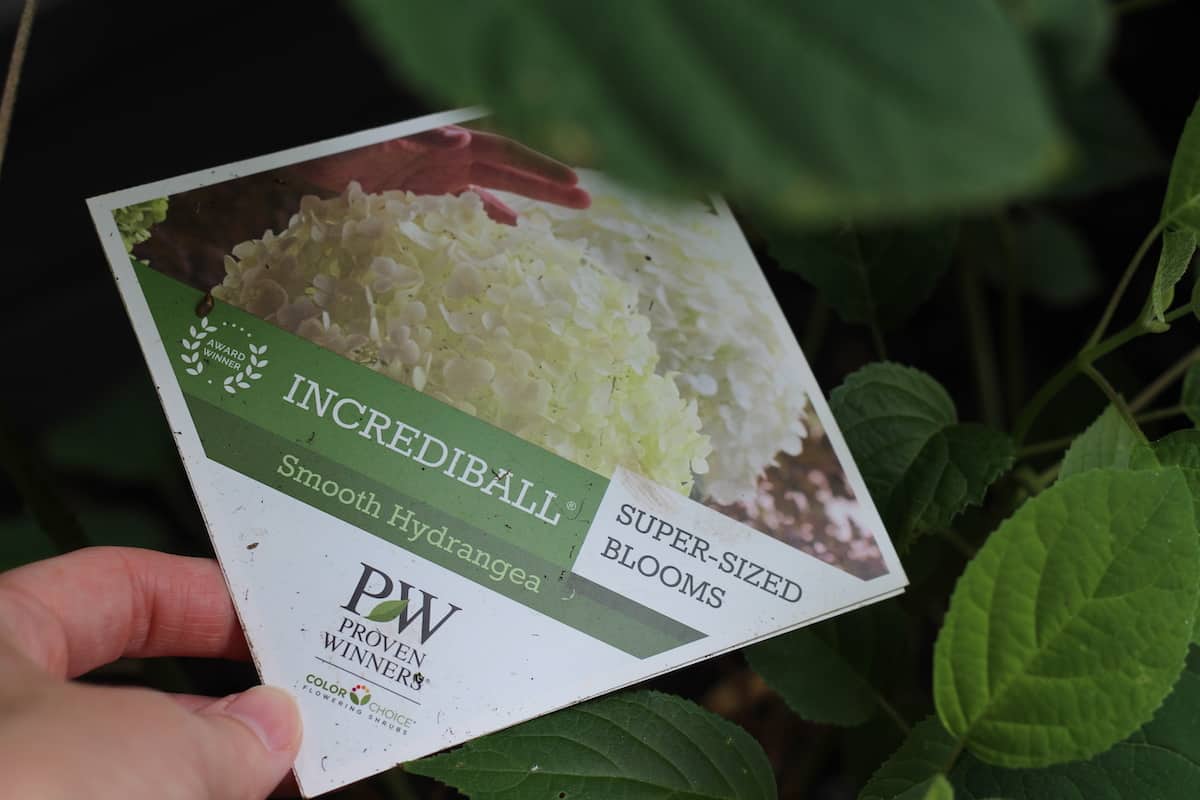
Soil preferences of Incrediball hydrangea
The Incrediball Hydrangea prefers well-drained soil. This means that it will be happiest in something like sandy loam. Heavy clay soil is not going to grow the healthiest specimen, although it might struggle along just fine. If there is a chance to improve the soil in the area before planting, consider that opportunity carefully. Soil that stays wet (doesn’t drain) can cause root rot in hydrangeas. The roots need air as much as they need water.
Other than poorly drained heavy clay soil, these plants are very tolerant of different soil conditions and generally don’t require any soil improvement at all. Incrediball shrubs like soil pH to be slightly acidic. Again, this isn’t a deal-breaker (just a preference). What they do love is soil that is nutrient-rich. Well-drained soil can lose nutrients as water drains through, so the addition of quality compost or organic fertilizer can help boost soil nutrients.
Mulching Incrediball hydrangea plants
A thick layer of organic mulch is a very important aspect of caring for Hydrangea “Incrediball.” While these plants like the sun, they NEED consistently moist soil to thrive. Use rich organic mulch like homemade compost. Just don’t bury the base of the plant in mulch – let the base of the plant breathe (and don’t trap moisture in).
Sunlight requirements for Incrediball hydrangea
Searching out a sunny spot is a key planting tip for Incrediball hydrangea, as it grows best in full sun to partial shade. Try to find a spot where it will get at least 6 hours of sunshine. If you’ve got a choice, the morning sun is preferable to the afternoon sun (though not at all a deal-breaker).
Years ago I had a notion that because hydrangeas enjoyed consistent soil moisture, they must love the shade. I was so wrong. The Incrediball shrubs I have in the shade are clearly not as happy as those in full sun. The shady shrubs have grown long and leggy, literally reaching out to find a bit of sunlight. The ones in the sunny areas are happily growing into rounded shrubs with stronger branches.
We live in zone 5, where winters are cold, and summers are hot. In our northern zone, Incrediball does well in full sun all day. In southern climates, shade from the blazing afternoon sun would be preferable. The morning sun just seems to be so much gentler on these shrubs.
While these shrubs do like sunlight, they’re not total sunbathers. These are not the right shrubs for dry, exposed locations. Moist soil that rarely dries out will produce the healthiest plants. Take the time to select a growing location that gets adequate sunshine but where the soil can also be kept moist.
Watering requirements for Incrediball hydrangea
Watering Incrediball Hydrangea shrubs is best done with a watering system. These plants love consistently moist soil. The digital timer of a DIY drip line irrigation system can keep up with frequent watering without becoming a burden on your yard work schedule. A drip line also waters the plants directly from the soil. Watering Incrediball Hydrangea from above is discouraged as the water can weigh down the enormous flowers and cause the stems to flop over. Not good! Water the soil at the base of the plant (not the foliage).
While they won’t love it, smooth hydrangeas will often survive droughts. These are native plants that are well-adapted to the climates of the North American East Coast. Their leaves may droop during hot, dry spells, but they won’t be the first plants to die during a drought. Keep on the lookout for droopy leaves and increase the frequency of the drip watering timer in dry spells. If these hydrangeas are left to totally dry out, they may not survive.
Growing temperature climate range for Incrediball hydrangea
Incrediball Hydrangea grows in Zones 3-9. At the colder end of this range, it’s wise to search out a warm microclimate protected from the worst of the winter harshness. At the hotter end of this range, it’s wise to seek out a spot where the plant is sheltered from the hot sun in the afternoon. Because Incrediball flowers on new wood, it is a reliable flower producer even in summers after particularly cold winters.
Summer and autumn rains can sometimes weigh down the flowers of Incrediball and cause the stems to flop over toward the ground. This generally happens with recently planted shrubs or particularly leggy specimens. Resist the urge to prune the whole plant back to the ground in the off-season. Prune instead to create a strong framework of woody stems to hold up years’ worth of enormous blooms (more on that below).
How to fertilize Incrediball hydrangea
Fertilize hydrangea plants with a slow-release granular organic fertilizer in the springtime. Slow-release fertilizer can be applied in early spring. The best time to fertilize is after the ground thaws and before growth really starts getting going.
If you’ve missed this window, that’s totally okay! Organic fertilizer can be applied to these shrubs until summertime. I would limit fertilizing in August-October to a top-dressing of homemade compost. Save concentrated organic products for springtime use.
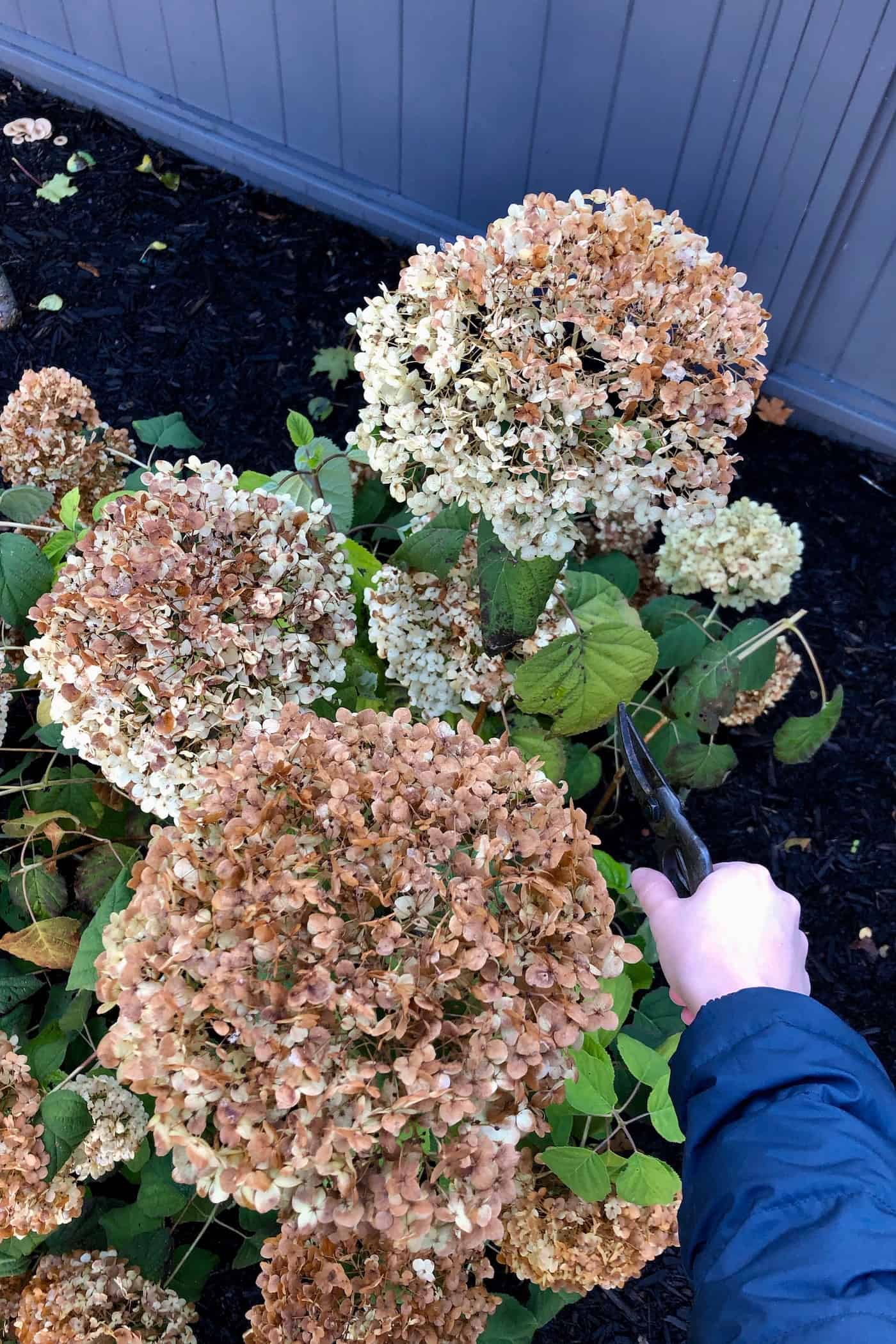
Incrediball hydrangea pruning guide
Incrediball hydrangea shrubs are generally pruned once a year, either in the late fall or early spring (just before it starts growing for the season). These shrubs don’t strictly require pruning, but many gardeners choose to prune to allow for air circulation, create a strong base of stems, and encourage flowering and a full shape.
While Incrediball Hydrangeas will usually survive being cut back right to the ground, they develop stronger stems over multiple years. Encouraging the shrub to strengthen its existing stems year after year is what protects the Incrediball Hydrangea from flopping over under the weight of its own heavy flowers. Do not prune it back all the way to the ground. Let its branches mature into a strong foundation for holding up lovely big white hydrangea flowers every summer.
Start pruning Incrediball Hydrangea by removing any branches that are dead, diseased, dying, or otherwise damaged. If there are quite a few stems to work with, I like to remove any questionable ones right down to the base of the plant for air circulation. Next, remove branches that are crossing over or rubbing on other branches. You can also remove any branches that are growing inwards towards the center of the shrub. The remaining main permanent stems should radiate outwards from the base like the rays of the sun!
Next, cut each main stem back by 1/3 of its total height. For instance, an Incrediball Hydrangea that is 4′ tall before pruning can have each branch cut back to about 2′ 8″ tall. This will remove many of the offshoots at the top of the branches allowing for vigorous spring growth. Incrediball Hydrangeas flower on freshly grown green wood, so make sure there is room for them to put on this new growth to flower! Pruning at the very start of the gardening season won’t remove any existing flower buds, but it will encourage fresh buds to grow in the springtime.
Timing pruning at the start of the season also allows gardeners to keep the spent hydrangea blooms on the branches over winter. These plants are stunners, even in the winter! Dried flowers provide visual interest in an otherwise bleak winter garden. They’ll be tan instead of white, but this just makes them stand out against the snow. Spent flower heads can also look interesting in freeform flower arrangements over winter. That said, it’s perfectly fine to deadhead hydrangeas and to prune them back in late fall instead of early spring.
As for pruning, cut the entire plant back by about one-third its total height each spring, just as the new growth begins to emerge on stems. This serves to build up a strong, supportive, woody base while also encouraging abundant new growth for plenty of flowers.
Proven Winners
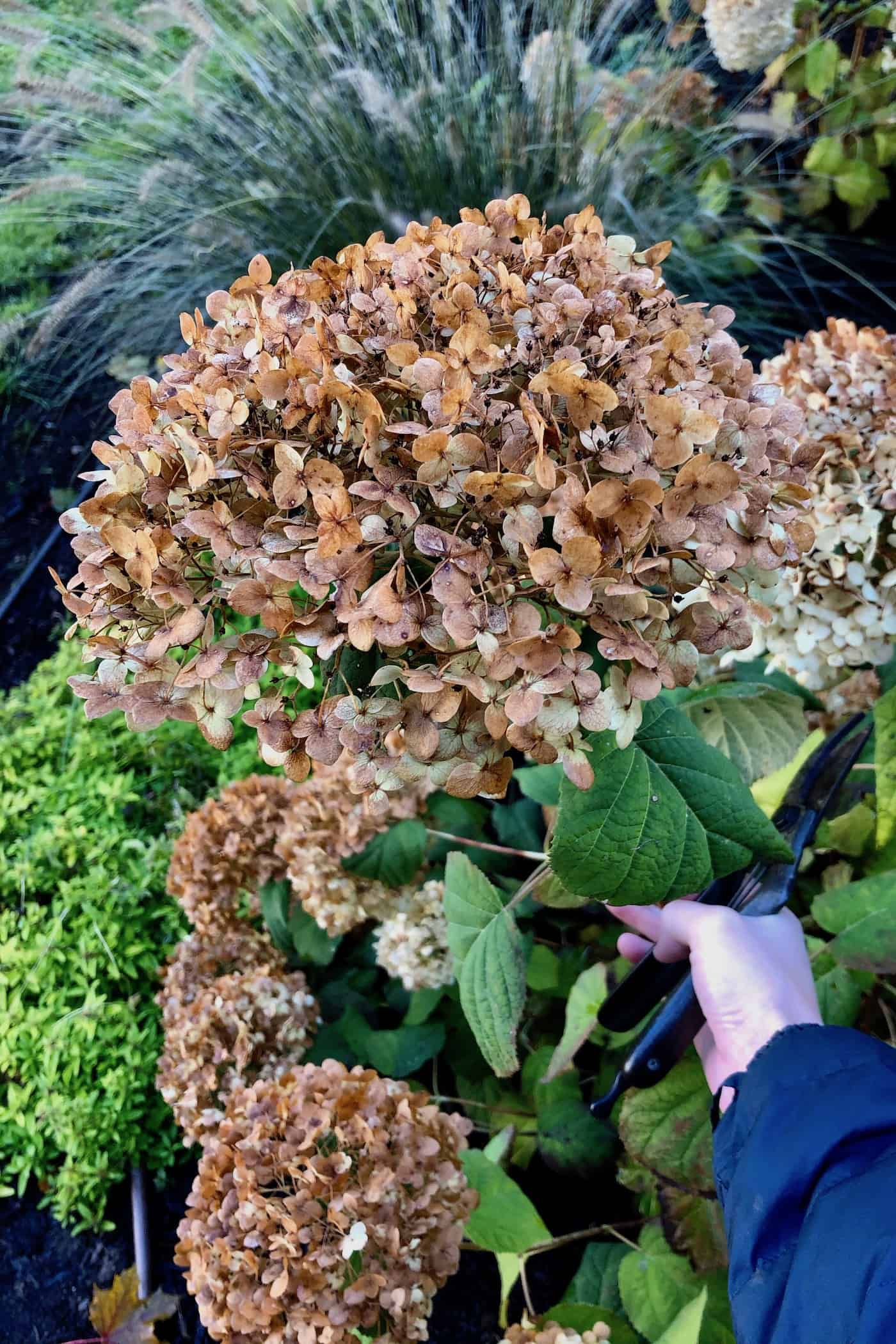
Deadheading Incrediball hydrangea after blooming
Do Incrediball Hydrangea flowers need to be deadheaded? The flowers of Incrediball Hydrangeas do not need to be deadheaded (cut off) during the growing season. You can deadhead this shrub’s flowers, but it’s not required. This is a hardy, tolerant shrub. Cut off the flowers whenever you wish.
Cut flowers for arrangements throughout the season. It’s nice to bring some inside the house during the summer or give them as gifts. If flowers are cut off early in the summer, the shrub may flower again that year. I also deadhead any flowers that have totally flopped over. This was more common when the shrubs were first planted and is less common now that a strong framework of permanent branches is required.
Incrediball hydrangea fall maintenance
Incrediball Hydrangea plants do not require any special winterization tactics. As with other shrubs, remove any branches that are dead, damaged, or diseased. I usually remove them all the way down to the base of the plant (assuming there are a few of them). Rake up fallen leaves and ensure that the stems have air circulation.
The flowers can be left standing on the Incrediball Hydrangea over winter. They provide lovely winter interest in the garden. Seed capsules will form in late fall and be a draw for beneficial wildlife. They’re also just pretty!
